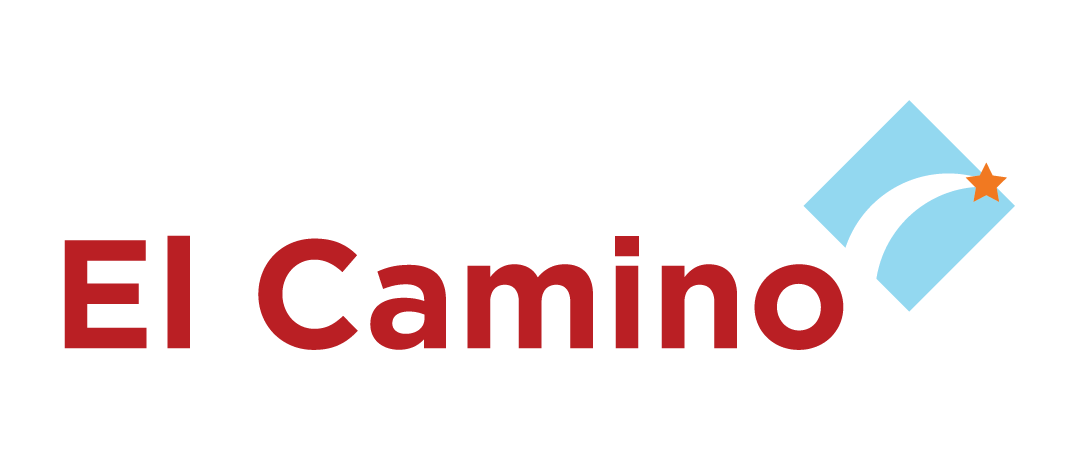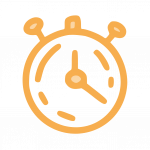
A Goal-Setting Sexual Health Promotion Program
El Camino is a sexual health education program designed for Latino youth based on positive youth development principles. El Camino, developed by Child Trends, provides education, skills, and support to empower its participants to set their own goals, make informed decisions about their sexual and reproductive health, and build healthy relationships. While created with Latino youth in mind, El Camino can be tailored to serve diverse populations of youth.
The El Camino curriculum is available for download—at no cost—in English and Spanish.
Quick Look
El Camino is a positive youth development-focused sexual health education program designed for Latino youth.

For Latino Youth
Implemented in schools & communities, especially those with large Latino populations

11, 45-Minute Lessons, in 3 Sections
Consists of eleven, 45-minute lessons, organized in 3 sections

Set Goals
Promotes youth academic & career setting; young people develop plans to achieve positive life goals

Make Informed Sexual & Reproductive Health Choices
Learn about how a pregnancy occurs and effective contraception methods to help avoid unintended pregnancy and STIs

Have Healthy Relationships
Learn about healthy relationships; practice communication skills, how to ask and give consent, and set limits
Read on to learn more about the curriculum, including evaluation findings, adaptations, facilitator resources, and training.
About the Curriculum
El Camino is a sexual health promotion curriculum designed—using positive youth development principles—for Latino young people. The program consists of eleven 45-minute lessons divided into three arcs, or sections, to encourage young people to (1) set goals, (2) make informed sexual and reproductive health choices, and (3) have healthy relationships.
Participating young people are asked to set a long-term goal and then consider steps to accomplish this goal. Young people learn about contraceptive methods and about how these methods could align with their goals. They also participate in interactive activities that encourage them to identify their viewpoints and discuss why they feel the way they do, practice assertive communication, learn about consent, and identify healthy relationships.
Throughout the program, participating teens read and discuss a series of novelas (stories) about other teens in relatable situations. These activities help them think through issues around goal setting, reproductive health, and healthy relationships. El Camino’s focus on the needs and cultural norms of Latino youth and their families helps participants set academic and career goals. Throughout, the activities in El Camino strive to engage parents to obtain their support for further education and delayed family formation.
The El Camino curriculum is developmentally appropriate, active, engaging, and youth-focused. It incorporates several unique features that distinguish it from other evidence-based/evidence-informed curricula designed to prevent teen pregnancy and STIs. In particular, El Camino’s lessons and activities:
- Are anchored in sexual health promotion and goal setting;
- Incorporate a goal achievement model throughout the curriculum;
- Are designed with a focus on the needs of Latino youth; and
- Introduce contraceptive methods and empower youth to choose the method that aligns with their goals.
Learn more about El Camino with the fact sheet, El Camino: Helping Teens Set Life Goals and Promote Sexual Health, available in English and Spanish. This fact sheet describes the El Camino curriculum and preliminary results from a pilot test of the program in seven schools and community-based organizations across six cities.
Goal & Behaviors
The overall goal of the El Camino curriculum is to provide tools for high school-age youth to make decisions about their sexual health and promote youth academic and career goal setting.
El Camino aims to change three key student behaviors that have a direct effect on its goal:
- Develop a plan to achieve positive life goals;
- Delay or abstain from sex; and
- Consistently and correctly use effective contraception and condoms, if sexually active.


Arc 3: Healthy Relationships
Arc 3, Healthy Relationships, aims to help young people develop assertive communication skills to protect their progress toward their goals, understand what constitutes consent, accurately and effectively communicate their limits with partners, and enjoy healthy relationships.

Arc 1: Goal Setting
Arc 1, Goal Setting, uses the imagery of a road (El Camino) to connect adolescents’ long-term goals with specific steps they can take to achieve those goals. Students themselves—without input from adults in their lives—set their goals and determine the steps they need to take to achieve those goals using the El Camino map as a tool.
In addition to the El Camino map, Arc 1 introduces the STAR model: State your goal, Think about the steps, Assert your camino, and Reach your goal. The map and STAR model guide young people through planning the steps needed to reach a goal by the time they are 25 years old, while simultaneously recognizing potential “road trips” that could help or hinder them from reaching their goal.

Arc 2: Sexual and Reproductive Health
Arc 2, Sexual and Reproductive Health, works to change young people’s knowledge, attitudes, self-efficacy, and behaviors regarding reproductive biology, and to teach them effective methods of contraception—all necessary steps for young people to make informed decisions on ways to protect and reach their goals. Students also learn how using contraception fits in with their El Camino map as they work to achieve their goals by age 25.
The Lessons: Three Arcs
The El Camino curriculum contains eleven 45-minute lessons divided into three sections, or arcs. The three arcs focus on goal setting, sexual and reproductive health, and healthy relationships. Additionally, El Camino strives, throughout the curriculum, to engage the parents of teen participants to obtain their support for education and delayed family formation.

Arc 3: Healthy Relationships
Arc 3, Healthy Relationships, aims to help young people develop assertive communication skills to protect their progress toward their goals, understand what constitutes consent, accurately and effectively communicate their limits with partners, and enjoy healthy relationships.

Arc 1: Goal Setting
Arc 1, Goal Setting, uses the imagery of a road (El Camino) to connect adolescents’ long-term goals with specific steps they can take to achieve those goals. Students themselves—without input from adults in their lives—set their goals and determine the steps they need to take to achieve those goals using the El Camino map as a tool.
In addition to the El Camino map, Arc 1 introduces the STAR model: State your goal, Think about the steps, Assert your camino, and Reach your goal. The map and STAR model guide young people through planning the steps needed to reach a goal by the time they are 25 years old, while simultaneously recognizing potential “road trips” that could help or hinder them from reaching their goal.

Arc 2: Sexual and Reproductive Health
Arc 2, Sexual and Reproductive Health, works to change young people’s knowledge, attitudes, self-efficacy, and behaviors regarding reproductive biology, and to teach them effective methods of contraception—all necessary steps for young people to make informed decisions on ways to protect and reach their goals. Students also learn how using contraception fits in with their El Camino map as they work to achieve their goals by age 25.
The Lessons: Three Arcs
The El Camino curriculum contains eleven 45-minute lessons divided into three sections, or arcs. The three arcs focus on goal setting, sexual and reproductive health, and healthy relationships. Additionally, El Camino strives, throughout the curriculum, to engage the parents of teen participants to obtain their support for education and delayed family formation.
Arc 3: Healthy Relationships
Arc 3, Healthy Relationships, aims to help young people develop assertive communication skills to protect their progress toward their goals, understand what constitutes consent, accurately and effectively communicate their limits with partners, and enjoy healthy relationships.
Arc 1: Goal Setting
Arc 1 uses the imagery of a road (El Camino) to connect adolescents’ long-term goals with specific steps they can take to achieve those goals. Students themselves—without input from adults in their lives—set their goals and determine the steps they need to take to achieve those goals using the El Camino map as a tool.
Arc 1 also introduces the STAR model: State your goal, Think about the steps, Assert your camino, and Reach your goal. The map and STAR model guide young people through planning the steps needed to reach a goal by the time they are 25 years old, while simultaneously recognizing potential “road trips” that could help or hinder them from reaching their goal.
Arc 2: Sexual and Reproductive Health
Arc 2, Sexual and Reproductive Health, works to change young people’s knowledge, attitudes, self-efficacy, and behaviors regarding reproductive biology, and to teach them effective methods of contraception—all necessary steps for young people to make informed decisions on ways to protect and reach their goals. Students also learn how using contraception fits in with their El Camino map as they work to achieve their goals by age 25.
The Lessons: Three Arcs
The El Camino curriculum contains eleven 45-minute lessons divided into three sections, or arcs. The three arcs focus on goal setting, sexual and reproductive health, and healthy relationships. Additionally, El Camino strives, throughout the curriculum, to engage the parents of teen participants to obtain their support for education and delayed family formation.
El Camino Activities
El Camino incorporates a variety of activities to engage students. These activities encourage students to think for themselves about important issues, such as relationships, school, and their futures. In El Camino, students engage in activities that include:
Reading Stories/Novelas
Reading stories/novelas throughout the curriculum that feature teen characters with whom they share key characteristics
Voting With Your Feet
“Voting with your feet,” meaning physically moving around a room to show agreement or disagreement with a statement or idea
Role-Playing
Role-playing with other students using scenarios about similar teenagers
Group Discussions
Participating in group discussions with teachers to discuss their thoughts and get answers to their questions
Goal Mapping
Goal mapping, where students identify and write their personal goal, to achieve by age 25, on a map and thinking about the steps necessary to reach that goal
Practicing Skills
Practicing skills by implementing concepts learned (for example, practicing assertive communication with partners or proper condom use)
Sneak a Peak
Videos from Child Trends showcase the impact of the El Camino curriculum from the perspectives of students, teachers, and researchers. The videos are available in Spanish and English.
What is the El Camino program?
This video provides a brief overview of the El Camino program, including descriptions of its purpose and how it was designed. The content highlights El Camino’s impact from the perspective of students who previously participated in the program.
¿Qué es el programa El Camino?
Este video ofrece una visión general del programa El Camino, incluyendo descripciones de su propósito y cómo se diseñó. El contenido destaca el impacto de El Camino desde la perspectiva de estudiantes que han participado en él.
Dive Deeper
Would you like to know more about El Camino?
This video builds on the content of the shorter version and includes more information on El Camino’s history, the development of its curriculum, and the research study on its implementation. The video highlights the importance of and need for a Positive Youth Development sexual health promotion program targeted toward Latino youth and Spanish-language speakers. Video contents include interviews of people connected to the program in multiple capacities to showcase program evaluation and preliminary research findings; among the interviewees are two students who participated in the program, the program manager, a program facilitator, and a Child Trends researcher.
¿Quiere saber más sobre El Camino?
Este video se basa en el contenido de la versión más corta e incluye más información sobre la historia de El Camino, el desarrollo de su plan de estudios y el estudio de investigación sobre su implementación. El video resalta la importancia y la necesidad de un programa de promoción de salud sexual del desarrollo juvenil positivo, dirigido a jóvenes latinos e hispanohablantes. El contenido del video incluye entrevistas con personas conectadas con el programa en múltiples capacidades para mostrar la evaluación del programa y los hallazgos preliminares de la investigación; entre los entrevistados se encuentran dos estudiantes que participaron en el programa, un director del programa, un facilitator del programa, y un investigador de Child Trends.
Video Project Credits
Direction, Writing, and Narration: Tina Plaza-Whoriskey
Video editing: Gabriella Guerra
Production: Shaniah Smith
Child Trends thanks the students, program facilitators, and staff at the partnering organization, Identity, Inc., who contributed to these videos by filming their classrooms during implementation, conducting informational interviews about program roles, reviewing and providing feedback on video drafts, and coordinating logistics for photography and videography of students at school. Child Trends specifically thanks the Identity staff who appeared in the video, Majo Lizarzaburu and Chris Gates, as well as the El Camino participants, Wilbur and Edvin.
These videos and the El Camino Rigorous Evaluation were supported by Grant Number 5 TP2AH00007-03-00 from the HHS Office of Population Affairs. Contents are solely the responsibility of the authors and do not necessarily represent the official views of the Department of Health and Human Services or the Office of Population Affairs.
Get It Now: Curriculum Materials
El Camino is available to download in English and in Spanish, at no cost. Materials include:
- Front Matter: Key Background Information for Implementing El Camino
- El Camino Curriculum
- Student Workbook
- El Camino Adaptation Guide
- Texto Preliminar: Información clave para implementar El Camino
- Curriculo de El Camino
- Cuaderno de Trabajo del Estudiante
- El Camino Guía de Adaptación
We Want Your Feedback!
What can we improve? Share your thoughts on this resource in our quick, anonymous feedback form. If you want to be entered to win a full conference registration—leave your contact info at the end!
Evaluation
Findings from the most recent evaluation of El Camino demonstrate that this culturally relevant program helps students in high schools with large Latino populations develop the knowledge, attitudes, behaviors, and relationships that support their ability to make informed decisions about sex and pregnancy and achieve their goals. Learn more...

Facilitation Resources & Training
Ready to go? We’ve got the resources, training, and support you need to implement El Camino.
Upcoming Events
Virtual and in-person...here's what's coming up next on our calendar.
The History of El Camino

Development, 2015-2018
From 2015 to 2018, Child Trends developed and tested El Camino with more than 300 students in Washington, DC; East Chicago, IN; Tacoma, WA; Baltimore, MD; Los Angeles, CA; and Philadelphia, PA. The curriculum development and field testing was funded by The JPB Foundation. The curriculum was developed in consultation with curriculum developers and sexual and reproductive health experts (from ETR, SHIFT NC, YouthBuild, and Healthy Teen Network), and draws on observations, student focus groups and surveys, and facilitator feedback.

Published, 2019
The El Camino curriculum was first published in 2019. Child Trends incorporated youth voices and feedback throughout development of the El Camino curriculum to ensure that it is age-appropriate and user-centered.

Curriculum Updated, 2020-2021

Evaluation, 2020-2024
From 2020-2024, Child Trends conducted a multi-year evaluation of El Camino in Montgomery County, MD, in partnership with Identity, Inc. and the University of Maryland with funding from the U.S. Health and Human Services Office of Population Affairs.
Partners & Collaborators
From 2015 to 2018, Child Trends developed and tested El Camino with more than 300 students in Washington, DC; East Chicago, IN; Tacoma, WA; Baltimore, MD; Los Angeles, CA; and Philadelphia, PA. The curriculum development and field testing was funded by The JPB Foundation.
Child Trends staff—Kristin Anderson Moore, Jennifer Manlove, Jenita Parekh, Bianca Faccio, Samuel Beckwith, and Lina Guzman—developed the curriculum in partnership with external advisors and curriculum writers Lori Rolleri and Linda Kaljee.
From 2020-2024, Child Trends conducted a multi-year evaluation of El Camino in Montgomery County, MD, in partnership with Identity, Inc. and the University of Maryland with funding from the U.S. Health and Human Services Office of Population Affairs.
Discover the magic of the Network.






